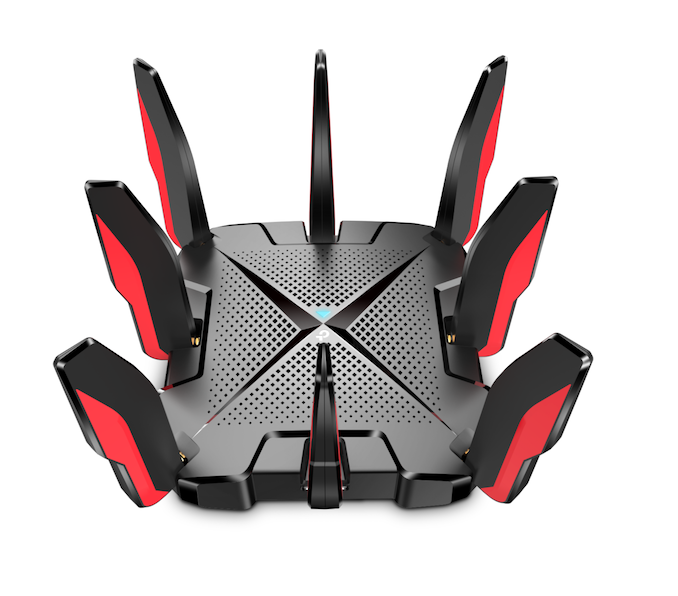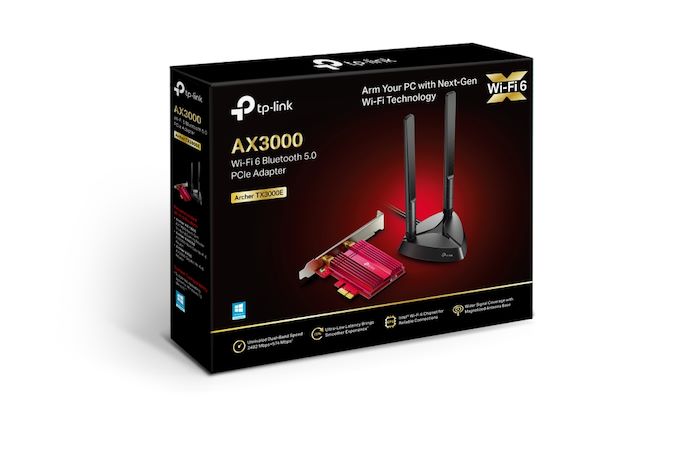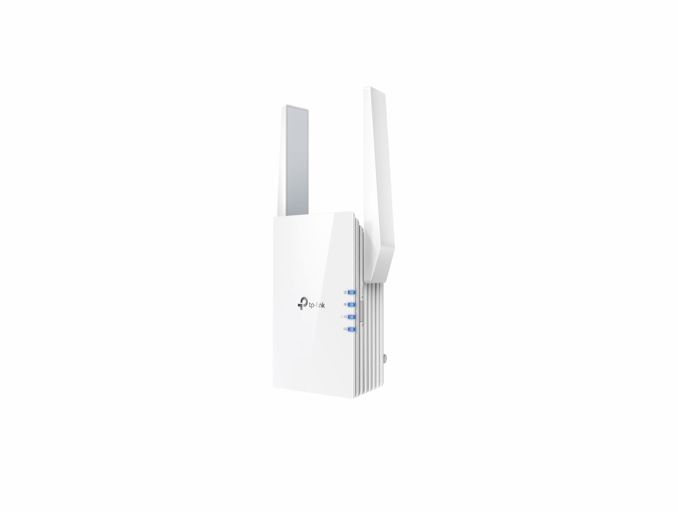TP-Link Expands Wi-Fi 6 Lineup, Introduces IoT Security with HomeCare Pro
by Ganesh T S on January 6, 2020 9:35 AM EST- Posted in
- Networking
- Trade Shows
- TP-LINK
- Wi-Fi 6
- CES 2020

TP-Link is announcing a slew of upgrades to their Wi-Fi 6 product stack at CES 2020. We have already covered the updates to the Deco Mesh Networking family in a separate piece.
On the routers side, we have the Archer AX90 and GX90 (both in the AX6000 class). The RE505X AX1500-class is the new product in the range extender line. TP-Link is also introducing an AX3000 PCIe card (Archer TX3000E)
The Archer AX90 uses three bands to achieve the AX6000-class rating (1201 Mbps @ 5 GHz + 4804 Mbps @ 5 GHz + 574 Mbps @2.4 GHz). It comes with a networking SoC featuring a 1.5GHz quad-core processor (making it look likely to be based on a Broadcom BCM47622 design). It comes with a 2.5 Gbps WAN/LAN port, a 1 Gbps WAN/LAN port, three Gigabit LAN ports and both a USB 3.0 and a USB 2.0 port. The eight antennae are quipped with beamforming support. The router also supports the newly update premium anti-virus and IoT security feature (TP-Link HomeCare Pro). It is priced at $300 and will be available in April 2020.
The Archer GX90 is the gamers' version of the AX90, and features a different external design as well as a modified UI. The 4x4 5 GHz band is dedicated as a gaming band, and there are software features such as 'Game Accelerator' to provide QoS functionality.
The GX90 is priced at $330 and will come to market in late Q2 2020.
The Archer TX3000E PCIe adapter is a PCIe 3.0 x1 Wi-Fi 6 card based on the Intel AX200 chipset. It features 1024-QAM and 160 MHz-wide channel support while also including Bluetooth 5.0. It also comes with a flexible external antenna.
The TX3000E is priced at $50 and will be available later this month.
The RE505X range extender is compatible with TP-Link's OneMesh family. It is an AX1500 dual-band device that can also act as an access point. The TP-Link Tether app can be used for hassle-free configuration of the extender.
The RE505X is priced at $70 and will be available in March 2020.
Overall, TP-Link has augmented their Wi-Fi 6 product stack with compelling budget offerings. As Wi-Fi 6 becomes more widespread, this strategy could help TP-Link gather greater mind and market share, particularly in North America.
On the cybersecurity side, TP-Link also announced the Avira-powered HomeCare Pro network security solution. Similar to solutions from other vendors like Netgear's BitDefender-powered Armor and Securifi's IoT Security feature, HomeCare Pro inspects and monitors connected devices for vulnerabilities and protection against unexpected / suspicious network traffic. TP-Link's existing HomeCare solution lacked fine-grained IoT device protection and parental controls, and this is addressed by HomeCare Pro. The capabilities offered by HomeCare Pro include anti-virus (across multiple end-device platforms, with blocking of malicious sites and intrusion detection), IoT security (safety and vulnerability checks), and parental controls (content filtering, time limits etc.). HomeCare Pro is also able to provide comprehensive reports related to the network behavior of each connected device.
The feature is set to be offered on a trial basis with all TP-Link Wi-Fi 6 products starting in late Q1 2020. Following this, the feature can be kept active on a subscription basis for $6/mo. or $55/yr.








1.0-cmyk_carousel_thumb.jpg)








5 Comments
View All Comments
crimsonson - Monday, January 6, 2020 - link
Can they design a better antenna system than this? It is like the disposable razor arms race. "You got 4? I'll raise you 2 more"andrewaggb - Monday, January 6, 2020 - link
I'm sure they'll squeeze a few more in there for next years model. Maybe they could design one that looks like a flower or a knife block.andrewaggb - Monday, January 6, 2020 - link
Looks aside... I am looking forward to wifi 6 and my existing tp-link networking gear has worked fine.pixelstuff - Monday, January 6, 2020 - link
Considering their Omada business line has no external antenna similar to the Ubiquity Unify product line, I bet they are making these consumer devices like that on purpose to sell to the dumber consumers out there.Solo450 - Monday, January 6, 2020 - link
I've always wondered why some of those Wi-Fi 6 PCIe adapters from various manufacturers, like this TX3000E from TP-Link, feature such massive heatsinks? After all, these Intel-based PCIe adapters basically consist of a "dumb" PCB that has an M.2 slot on it in which an Intel Wi-Fi 6 AX200 module is plugged into. Aren't these Intel AX200 M.2 modules primarily intended for use in tightly packed laptop computers, where there is normally no heatsink attached to the Wifi module at all?